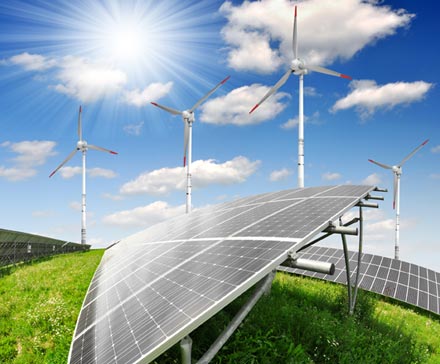Today's power grid is rapidly ageing, and with new energy issues looming on the horizon, smart grids appear to be a promising solution for the future.
Smart grids are a new type of power grid that use the existing infrastructure to achieve specific objectives for managing grids in an increasingly complex environment. They do this by taking advantage of information and communication technologies, explains Nouredine Hadjsaid, professor at Grenoble INP - Ense3. Smart grids aim to meet changing needs and new types of usage (such as electric vehicles) and to improve the reliability and safety of the grid. They are also designed to increase the penetration rates of intermittent renewable energies under the best economic conditions and safety requirements. They should also optimise investments and operating costs.

Make smart electrical grids
The proliferation of information and communication technologies (ICTs) represents an excellent opportunity for improving the observability of grids and helping users to take control of their own consumption. It also means that more dynamic control modes can be integrated, especially in terms of distribution systems, new energy services, etc.
As a result, the progressive coupling of power grids and ICTs will lead to energy savings and make it possible to use the cleanest and cheapest source of electricity at any given moment, at the same time incorporating the widespread use of renewable energies. In fact, smart energy makes it possible for decentralised and intermittent energies (such as solar and wind power) to rub shoulders with traditional forms of energy and centralised management systems (nuclear power). The grid is currently ill-suited to intermittent production; however, smart connection would allow the French network to adapt to the wide range of different production methods and new uses that are being made of electricity. Finally, smart grids allow for the more efficient management of peak consumption periods and help to avoid the risk of power cuts in the most vulnerable regions.
Smart grids are a new type of power grid that use the existing infrastructure to achieve specific objectives for managing grids in an increasingly complex environment. They do this by taking advantage of information and communication technologies, explains Nouredine Hadjsaid, professor at Grenoble INP - Ense3. Smart grids aim to meet changing needs and new types of usage (such as electric vehicles) and to improve the reliability and safety of the grid. They are also designed to increase the penetration rates of intermittent renewable energies under the best economic conditions and safety requirements. They should also optimise investments and operating costs.

Make smart electrical grids
The proliferation of information and communication technologies (ICTs) represents an excellent opportunity for improving the observability of grids and helping users to take control of their own consumption. It also means that more dynamic control modes can be integrated, especially in terms of distribution systems, new energy services, etc.
As a result, the progressive coupling of power grids and ICTs will lead to energy savings and make it possible to use the cleanest and cheapest source of electricity at any given moment, at the same time incorporating the widespread use of renewable energies. In fact, smart energy makes it possible for decentralised and intermittent energies (such as solar and wind power) to rub shoulders with traditional forms of energy and centralised management systems (nuclear power). The grid is currently ill-suited to intermittent production; however, smart connection would allow the French network to adapt to the wide range of different production methods and new uses that are being made of electricity. Finally, smart grids allow for the more efficient management of peak consumption periods and help to avoid the risk of power cuts in the most vulnerable regions.
- Editorial : Grenoble INP, a really smart grid strategy
- Smart grids: the power grids of the future
- Grenoble INP: at the forefront of research and training for smart grids
- Industrial chair of excellence in smart grids
- GreenLys: a full-scale demonstrator
- A personal view (GEG) : « GreenLys is our anticipation lab »
- Super grid: the large-scale transmission of electricity





